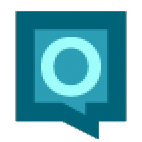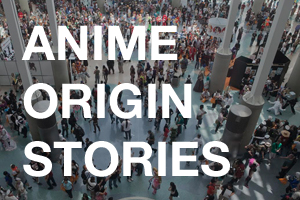I was going to call this post, “My office essentials,” but one of the best parts about my life is that I don’t have an office. Sometimes I work with my scaly coworker Fintan at the minidesk above. Other times I sit on the couch. In summer, I walk to my closest library branch, which is in the middle of a community park. In winter, I drive to the larger regional library.
No matter where I am, there are a few essential tools I can always rely on, all of which are easily portable to any workspace. Here they are, in order from priciest to free:
15 inch Macbook Pro: I picked the biggest screen available because sometimes it’s my entire world for the duration of the work day. If I could commit to working from a single desktop all the time, I’d definitely be one of those people with two screens.
My parents bought me my first Apple computer as a college graduation present so I could use it for journalism school. Four years later, it’s really time to replace it (since its battery life is only about 20 minutes), but I realize that it isn’t a very affordable option. So for my next computer I’m thinking about getting a refurbished Macbook or a much cheaper PC ultrabook.
Adobe Creative Suite: At about $1200, this isn’t any more affordable, but I got it for free. As an adjunct professor for American University, I got the Student and Teacher edition installed on my personal computer so I could use it as a teaching tool. If you’re a student or teacher, you might be able to get a free version, too.
I am currently using Adobe CS5, but CS6 is the latest available. I use Adobe InDesign to format my digital guides. I use Illustrator to create web design wireframes, infographics, and any graphics I use on this or other sites. I use Photoshop to alter and edit pictures I take. Dreamweaver is the only one I use in my teaching curriculum.
There are ways to make this a little more affordable, by looking for the nonprofessional versions of each program, and by only buying the ones you need. For example, I use Adobe Premiere CS5 to edit my vlogs, but I could easily use Adobe Premiere Elements 11, the amateur and far cheaper version of the same program.
But if you’re honing your skills for a design or Web design job, I’d find a way to get my hands on the commercial version. These are required skills for most design jobs, at least the ones that I’ve applied for.
Nikon P7000: I don’t know much about cameras, so I didn’t buy this online. I went to Penn Camera, a local chain in DC, and let an employee walk me through all the varieties. This one was described to me as “what professional photographers use on weekends” and I liked that. Video and audio wise, it has a mic jack in case I want to record on-screen interviews, and it shoots in widescreen.
When it comes to still photography, I’m still learning. My New Year’s resolution was to keep my camera on its manual setting all year long and learn how to adjust the aperture and shutter speed. It’s a lot more interesting to take photos this way.
Benro aluminum tripod: This is what I use when I’m recording my vlogs, plus any other time I take video. I bought this when I was doing a lot more documentary work for school so the $200 price was more worth paying then. This is the most lightweight tripod I have ever lifted, perfect for people with smaller frames. I wouldn’t think anything of carrying this around on my back at an anime convention, something I have easily done before.
Reporter notebooks: This is the same brand I’ve been using ever since I began my first journalism internship at the Free Lance-Star. They’re simple, iconic, and you can buy them in bulk. I look like I’m 12, but nobody second guesses my authority as a reporter when I’m holding one of these. I use them when I’m reporting in person as well as when I’m just recording timestamps for a phone interview.
Pilot Precise V5: The only pen I use. It’s got a thick point (compared to the smaller V7 option) that will bleed through thin paper. I like knowing that my writing isn’t going to fade away. Also, they come in every color (but I still only ever use black).
Garageband: If you have a Mac, this is free. If you have a PC, there are a lot of similar, free programs. I use it for phone interviews. If my source allows, I put him or her on speakerphone and start Garageband as if I were recording a podcast. Then I take notes on paper to mark the timestamps for significant quotes. It’s significantly improved my accuracy.
Record my Call: Another alternate to Garageband. This Android app is a one-touch recording program. However, you still need to have the subject on speakerphone for it to sound good.
Google Drive: Just in case you’re living under a rock, here’s why you should use this free, cloud-based, sleek Microsoft Word clone. You’ll never lose a document again. If your computer shuts down, Drive’s automatic saves keep your file from disappearing. You can also work on a file at home and then open it up to print it somewhere else. No more zip drives.
tomatoi.st: As I talked about in my first vlog, this Pomodoro Technique tracker has changed my entire writing regimen. If your brain works best in sprints like mine, this tool forces you to focus for just 25 minutes at a time before taking a break. It also cuts down on procrastination because you can tell yourself, “I’m just going to work for a quarter of an hour and then relax.” Usually you’ll end up wanting to work for far longer than that!
Do you have a nomadic workspace? What tools do you consider your essentials?
Discover more from Otaku Journalist
Subscribe to get the latest posts sent to your email.





10 Comments.
Agh! Your desk is so organized! Nothing in my life is that neat, although I occasionally delete a lot of spare icons from my desktop. I use Drive for everything these days. A little paranoid part of me is worried this will somehow come back to bite me, but in the mean time, it sure is convenient!
When your desk is only three feet long, you HAVE to keep it organized! If I had anything else on it, I wouldn’t be able to see the surface anymore.
Yeah, now that I mentioned Drive, Google’s announcement that they’re ending it should be any day now X_X
Mine are:
– A homebuilt PC with dual monitors
– Microsoft Office (I use Outlook for a lot of work-tracking)
– TiddlyWiki for organizing creative projects. I started using this software to keep my most recent novel, Flight of the Vajra from becoming a shapeless bag of garbage, and it seems to have worked. No other organizational tool I’ve used has come close, in big part because this doesn’t impose a structure on you. You pick the structure you want for the work you’re doing, and you can impose it gradually or all at once.
– The Logitech K750 cordless solar keyboard. Most comfortable one I’ve used so far, barring the old IBM mechanical “clicky” keyboards — and it never runs out of battery power. The ambient light from my room’s lighting is enough to keep it powered and then some.
– Goggle Chrome, for running TiddlyWiki. I’m not a big fan of doing stuff in a web browser, but if I have to use anything, I’ll use Chrome … with all the personal-tracking stuff turned off, thank you.
– Mozy. For remote backups.
– Music. Jazz. Coltrane.
@Serder, this sounds like a pretty sweet setup. I’d love to see a photo of that homebuilt PC!
For an ultrabook, might I recommend this one? http://www.bestbuy.com/site/Acer+-+Ultrabook+15.6%26%2334%3B+Laptop+-+6GB+Memory+-+500GB+Hard+Drive+-+Silver/7689043.p?id=1218858193066&skuId=7689043
I bought this recently and it works wonderfully. :D
@Tony, what a big, sleek computer! I need as big a screen as possible (with the laptop still being portable) so I love this. The one thing I’ll need to do is get a copy of Adobe Creative Suite for PC instead.
Hi fellow Lauren! I loved this idea and did something similar on my blog! <3
@Lauren, I just checked it out! I think it’s awesome you use a paper planner. I write tons of to-do lists, but I really wish I had the discipline to cram it all into one planner. I actually have a Moleskine Weekly and it’s just collecting dust.
By skimming throughout this post, I found out the Pomodoro Technique. I said to myself, “This is nice. Might as well try it.”
Aw man, all I got is
-My laptop
-A LCD TV
-A stack of BD/DVDs
-a binder
I do happen to use Google Drive though. Preetttty efficient I’d say :D